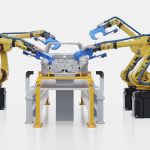How Cross-Functional Agility Powers a More Resilient Manufacturing Model
This is Part 3 of Aligning Factory and Supply Chain, our editorial series for senior operations and supply chain leaders. In Part 1, we looked at how planning often breaks down at the execution level. In Part 2, we explored how bad data undermines trust and misguides decision-making. In this final article, we turn our attention to the systems, behaviors, and relationships that separate reactive manufacturers from proactive ones.
The Culture of Reaction—and Why It Persists
For many manufacturers, agility remains more aspiration than reality. Factory teams juggle last-minute shortages. Supply chain managers expedite materials that should’ve arrived days ago. Planning teams are revising schedules on a rolling basis. Every function is solving problems—but always one step behind.
This state of perpetual firefighting isn’t due to lack of talent or poor intentions. It’s often the result of disconnected rhythms between planning, sourcing, and execution. When factory and supply chain teams don’t share information in real time—or don’t share the same priorities—they optimize for local wins, not system-wide performance. The result is a highly reactive operating model, where energy is spent managing volatility rather than reducing it.
Why Cross-Functional Alignment Isn’t a Meeting—It’s a System
The turning point for most organizations isn’t a new dashboard or another S&OP cycle—it’s recognizing that alignment must be built into the daily mechanics of how teams work. This means linking factory schedules to supplier performance in real time, making material availability and constraints visible across functions, and ensuring everyone—from procurement to production—has a shared understanding of what matters most that week.
The most effective manufacturing leaders aren’t just measuring outputs. They’re managing the flow of inputs—information, materials, decisions—and ensuring that these flow consistently across silos. When a critical material drops below safety stock, the goal isn’t just to inform procurement. It’s to empower sourcing, planning, and production to coordinate a response before the issue hits the line.
This shift requires strong supplier relationships based on mutual trust, clear expectations, and timely data sharing. It also depends on having a common language for performance. When every team is measuring different KPIs in different ways, misalignment is inevitable. But when there’s a shared understanding of availability, risk, and readiness, priorities can be coordinated—not just debated.
From Agile Thinking to Agile Behavior
Agility doesn’t start with technology. It starts with the discipline of fast escalation and collaborative resolution. Leading manufacturers cultivate a habit of cross-functional check-ins—not long meetings, but short, focused interactions designed to surface emerging risks before they become breakdowns. These rhythms, done well, embed agility into the organization’s operating model.
More importantly, agility isn’t reserved for crisis response. It’s how leaders manage trade-offs daily. Whether it’s choosing which work order to run first, which supplier to escalate, or which stock level to hold, decisions are no longer made in isolation. They are shaped by a shared view of risk, a mutual understanding of constraints, and a commitment to system-wide performance over functional wins.
Agility Is a Culture, Not a Contingency Plan
Agility has become one of the most overused words in manufacturing—usually invoked during crises, then forgotten in calmer quarters. But true agility isn’t episodic. It’s a system of behaviors, relationships, and rhythms that allow organizations to adjust quickly, align early, and recover faster.
The manufacturers that outperform in today’s volatile landscape aren’t the ones with the most elaborate planning tools or the leanest inventories. They’re the ones who’ve broken down the silos between factory and supply chain—not just in data, but in trust and behavior. They escalate issues early. They act with shared purpose. They solve systemically.
That’s the real shift—from firefighting, to forward motion.







